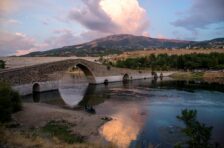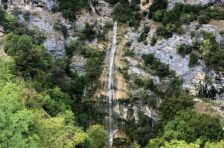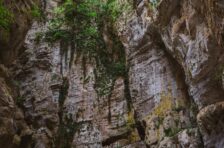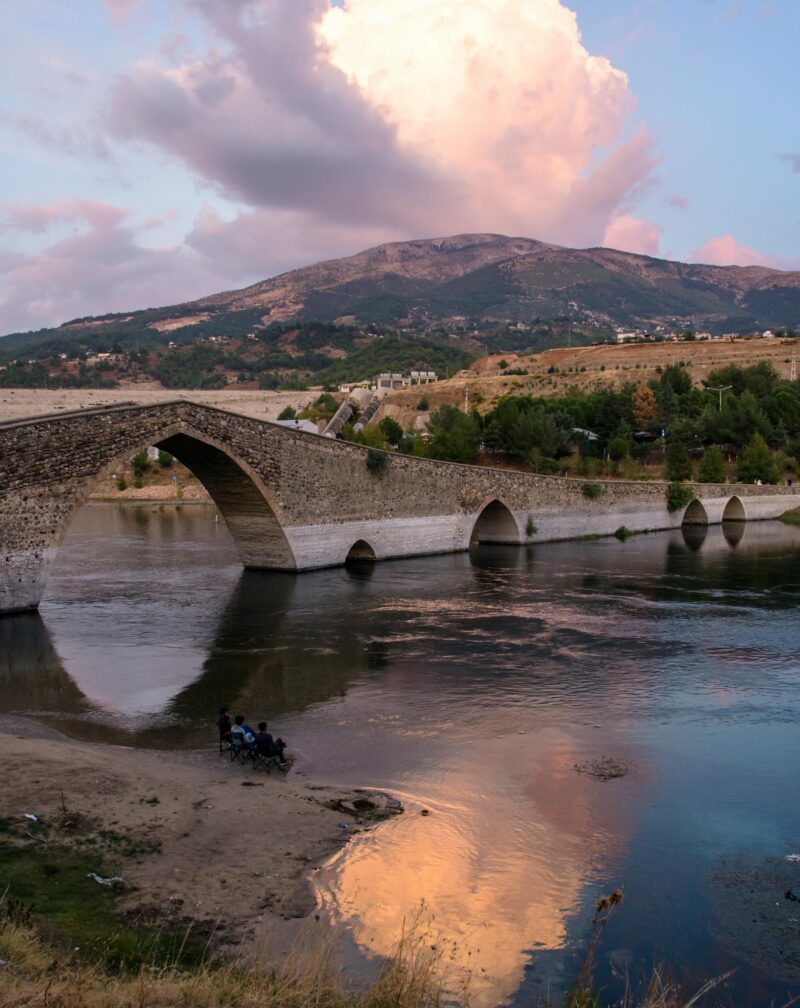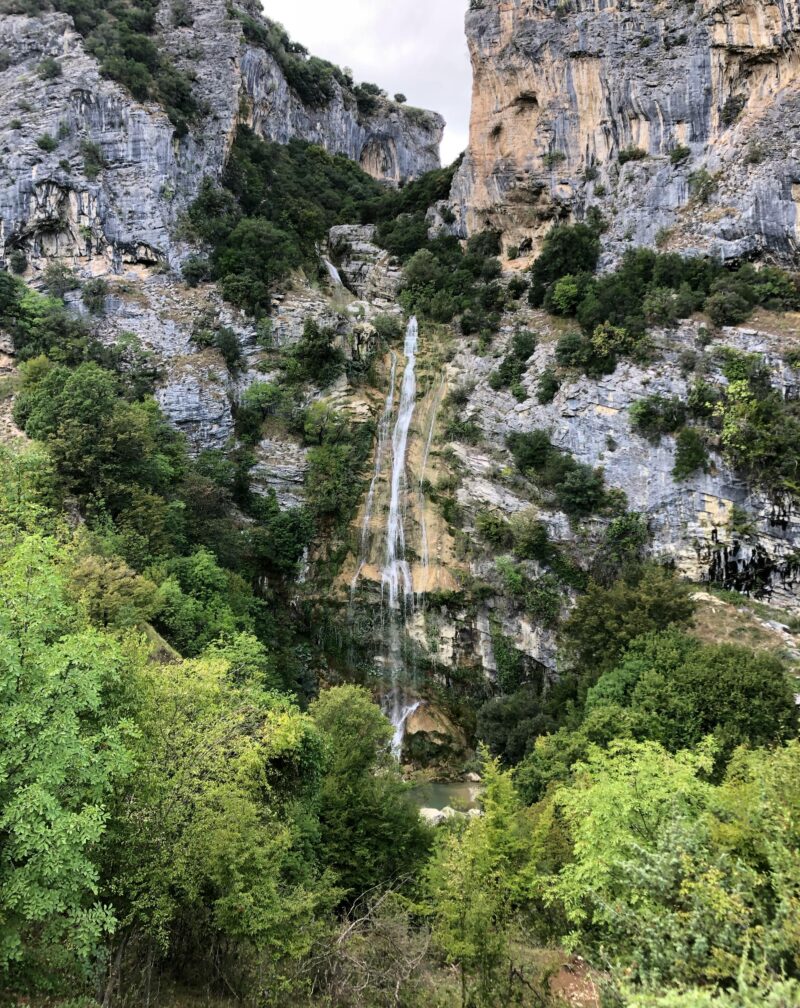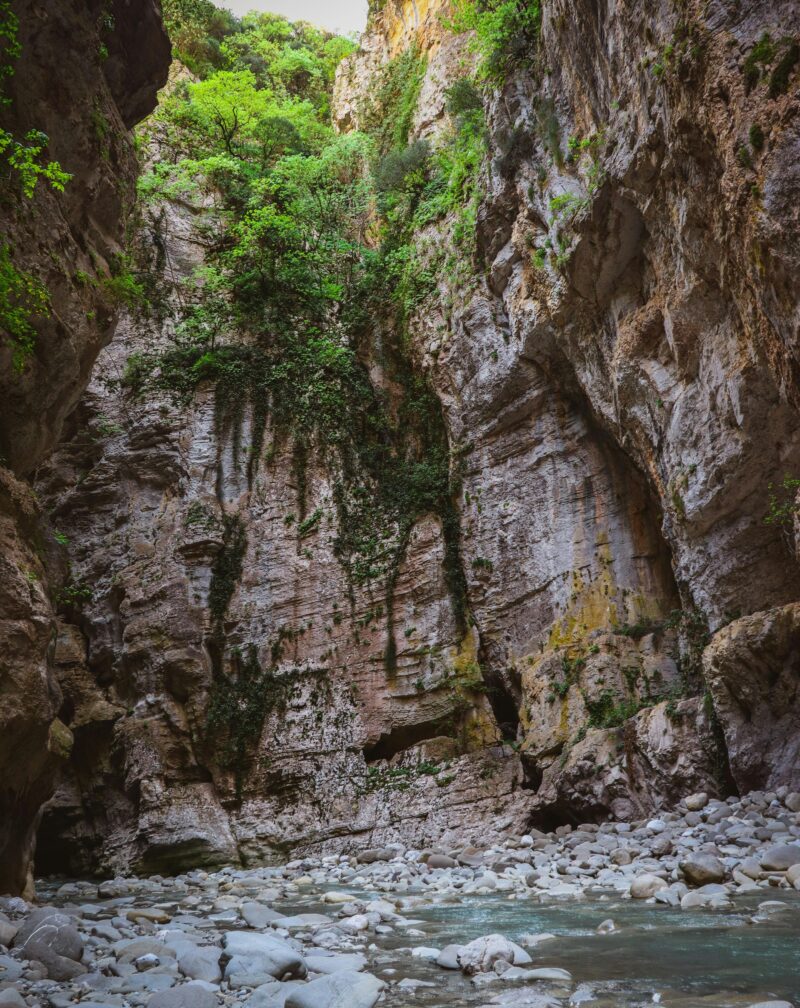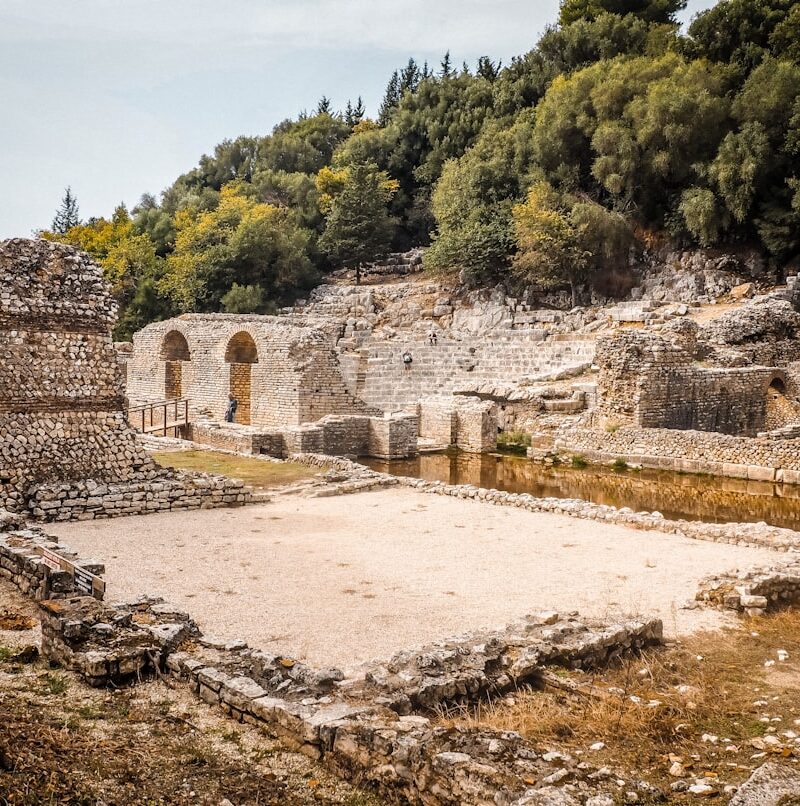The Ancient City Among Olives
Apollonia sits in the countryside near Fier, surrounded by olive groves that have existed for centuries. The archaeological site preserves ancient Greek Roman city that was among the most important in the region, famous enough that Roman Emperor Augustus studied here.
The setting is peaceful ruins scattered across gentle hills, olive trees providing shade, mountains visible in distance. It’s not dramatic like cliff-side fortresses, but it has quiet beauty and genuine historical significance.
History
Founded 588 BC by Greek colonists from Corinth and Corfu, Apollonia grew into major city. Its location near the Adriatic and on the Via Egnatia (Roman road connecting Adriatic to Aegean) made it a prosperous trade center.
During the Roman period, Apollonia reached its peak—perhaps 60,000 inhabitants. Julius Caesar sent his nephew Octavian (future Emperor Augustus) to study here in 44 BC, showing the city’s reputation for learning.
The city declined when the Vjosa River changed course, cutting off harbor access. By the medieval period, it was largely abandoned. The ruins sat quietly until archaeological work began in the 20th century.
The Archaeological Site
The excavated area represents a fraction of an ancient city—most remains underground. What’s visible gives a sense of scale and importance.
Monument of Agonothetes The site’s iconic structure—partially reconstructed classical facade with Corinthian columns. It dates from the 2nd century AD, possibly an administrative building or library.
The reconstruction is contentious archaeologically (mid-20th century methods weren’t sophisticated), but it provides visual anchor. The columns rising against the blue sky are undeniably photogenic.
Ancient Theater Greek theater built into hillside, typical classical design. It’s not massive, capacity perhaps 4,000. The semicircular orchestra and stone seating are clearly visible.
The acoustics still work—speaking from orchestra level carries to upper seats. The setting, surrounded by olive groves with mountain backdrop, is beautiful.
Library of Apollonia Ruins of what was significant library. Only foundations remain, but they show the building’s scale. For a city to have a library of this size indicates intellectual ambitions.
Odeon Small roofed theater for musical performances and council meetings. The structure is more intact than the main theater, with walls standing several meters high.
Portico and Agora Colonnade and marketplace ruins showing public spaces where commercial and civic life occurred. Foundation stones trace building outlines. Walking among them requires imagination to visualize the bustling ancient city.
House of Mosaics Residential area with floor mosaics partially preserved. They’re not spectacular by Pompeii standards, but they’re in situ, showing how wealthy Apollonia residents decorated homes.
Monastery of St. Mary
Within the archaeological zone sits Byzantine monastery (13th century), built using stones from ancient ruins. It represents continuity of site use across millennia.
The monastery houses Archaeological Museum with finds from Apollonia:
- Sculptures and architectural elements
- Pottery and household items
- Coins showing trade connections
- Inscriptions and carved stones
- Religious artifacts from Christian period
- Scale models showing how ancient city probably looked
The museum is modest but well-curated. English information is available. It provides context essential for understanding scattered ruins.
Entry to site and museum is combined ticket, around 300 lek.
The Church The monastery church is architecturally interesting—Byzantine design using classical columns and stones as building materials. Inside, frescoes show different painting periods.
The church is still consecrated, occasionally used for services. It’s generally open to visitors with appropriate respect.
Walking the Site
The archaeological park covers significant area. You can walk among ruins at leisure—no ropes blocking access, no guards hovering. This freedom is refreshing compared to heavily controlled sites elsewhere.
Paths wind through olive groves connecting different areas. The olive trees are ancient—gnarled trunks, silvery leaves, seasonal fruit. They’ve grown among ruins for generations.
Spring brings wildflowers. Poppies create red splashes against stone. The combination of ruins, olives, and flowers is quintessentially Mediterranean.
Summer is hot—no shade except under olives. Bring water, sun protection, hat. Morning or late afternoon visits are more comfortable.
Autumn light is beautiful—golden, warm, perfect for photography.
Picnicking
The site allows picnicking among ruins. Bringing lunch and eating under olive trees with ancient stones nearby is perfectly acceptable and pleasantly civilized.
Local markets sell bread, cheese, olives, tomatoes—simple meal eaten in 2,400-year-old city among olive groves creates memorable experience.
Time Needed
You can see main structures in 1-1.5 hours rushing. But Apollonia deserves more time—2-3 hours allow proper exploration, museum visits, and soaking in the atmosphere.
This isn’t a site to sprint through checking boxes. It’s a place to wander, sit, imagine, absorb.
Guides
Official guides are available at entrance (price negotiable, usually 1,500-2,000 lek for small group). Having a guide helps tremendously—ruins without explanation are just old stones.
Guides explain history, point out details easily missed, answer questions, provide context that transforms experience.
If you don’t hire guide, bring guidebook or download information beforehand. The site itself has minimal interpretive panels.
Practical Information
Getting There:
- From Tirana: 2 hours by bus to Fier, then taxi (15 minutes) to Apollonia
- From Vlora: 1 hour
- From Berat: 1.5 hours
- Day trips from Tirana often combine with Berat or Vlora
By car: Well-marked roads, ample parking. GPS coordinates work reliably.
Opening Hours: Daily 8 AM-7 PM summer (shorter winter hours). Closed major holidays sometimes.
Facilities: Small cafe sells drinks and snacks. Bathrooms available. No restaurants immediately adjacent plan accordingly.
Accessibility: Mostly flat walking, though uneven ground and scattered ruins make it challenging for wheelchairs or limited mobility.
Combining Visits
Apollonia pairs well with:
- Berat (1.5 hours away) – UNESCO Ottoman town
- Vlora (1 hour) – coastal city, beaches
- Ardenica Monastery (20 minutes) – Byzantine monastery with frescoes
Full-day tours from Tirana often include Apollonia plus one other site.
Ardenica Monastery
While you’re in the area, Ardenica Monastery (20 minutes from Apollonia) deserves visit.
This 13th-century Byzantine monastery sits on hilltop with valley views. The church contains beautiful 18th-century frescoes covering walls and ceiling—saints, biblical scenes, ornate decorations.
The monastery is associated with Skanderbeg—legend says he married here in 1451. Whether historically accurate or not, Albanians believe it, making it pilgrimage site.
Orthodox monks maintain the monastery. They’re usually welcoming, showing visitors the church and explaining frescoes.
Entry is free, donation appreciated.
The Apollonia Experience
Apollonia doesn’t overwhelm with scale like Rome’s Forum or dramatic setting like Delphi. Its appeal is subtler—history embedded in peaceful landscape, ruins integrated with nature, sense of place that’s remained essentially unchanged for centuries.
Walking among stones where Augustus studied, where Greek colonists built temples, where merchants traded goods from across Mediterranean—that continuity of human presence is compelling.
The olive groves add dimension. These aren’t ornamental trees planted for effect—they’re working agricultural landscape, producing olives as they have for millennia. The interweaving of archaeology and agriculture creates something more interesting than either alone.
Apollonia works best for people who appreciate archaeological sites, who enjoy imagining ancient life, who find pleasure in ruins and countryside. If you need spectacular monuments or active entertainment, it might disappoint.
But if you want to understand Albanian and broader Mediterranean history, to see important site before mass tourism discovers it, to experience peaceful beauty, Apollonia delivers quietly and genuinely.
It’s not on every itinerary. Many travelers skip it, focusing on Berat or rushing straight to beaches. Those who include it often call it unexpected highlight—not despite its quiet character but because of it.




